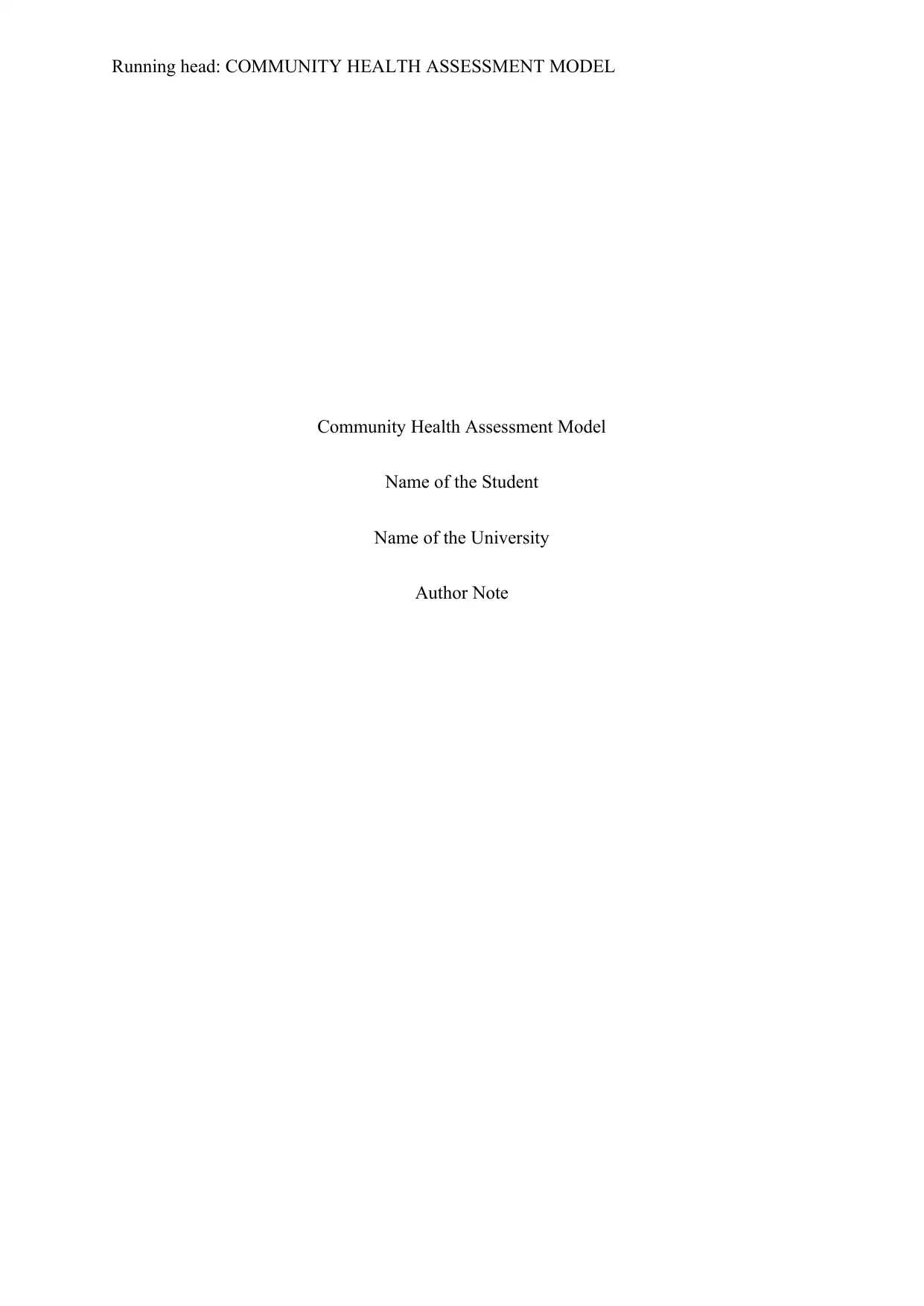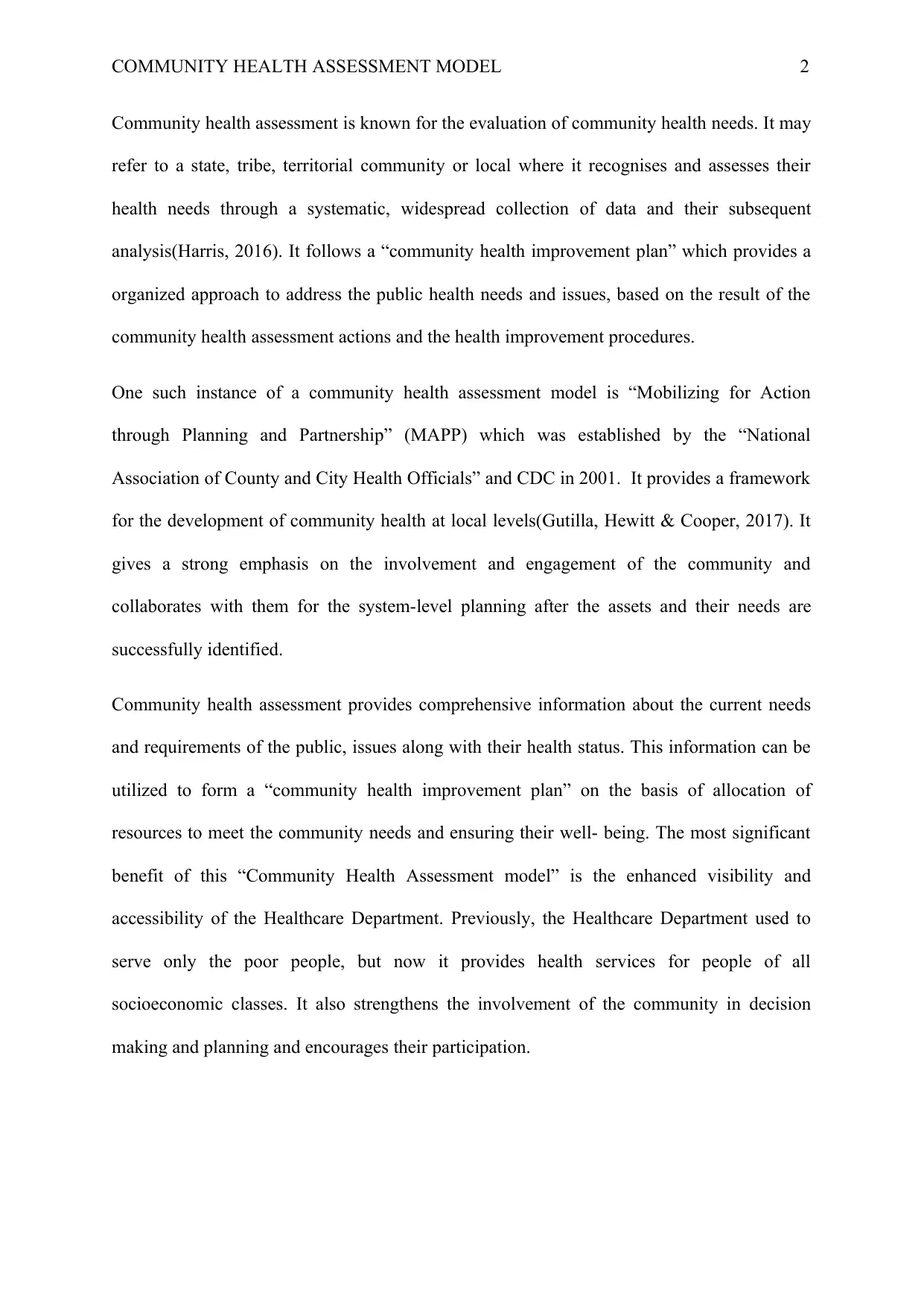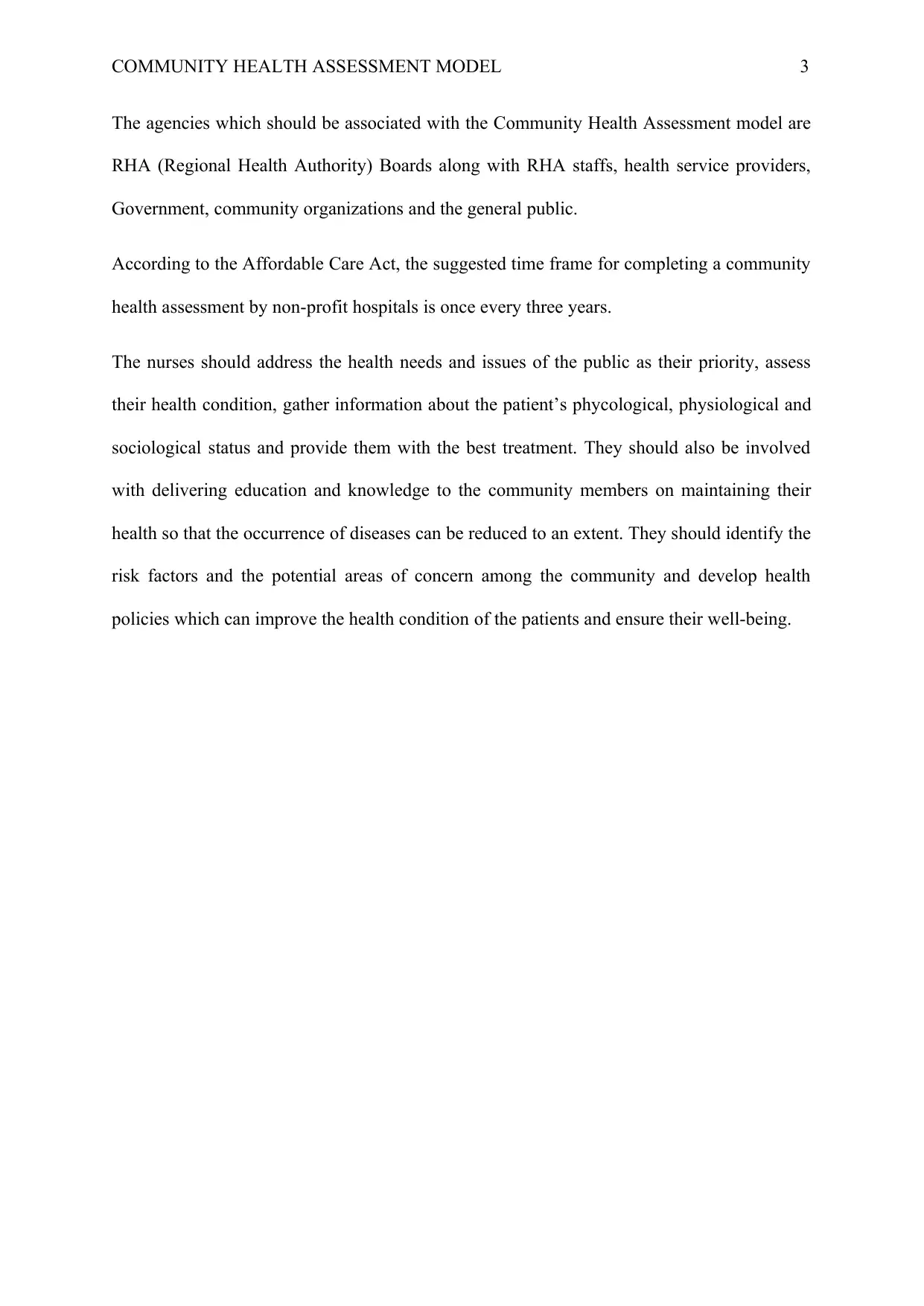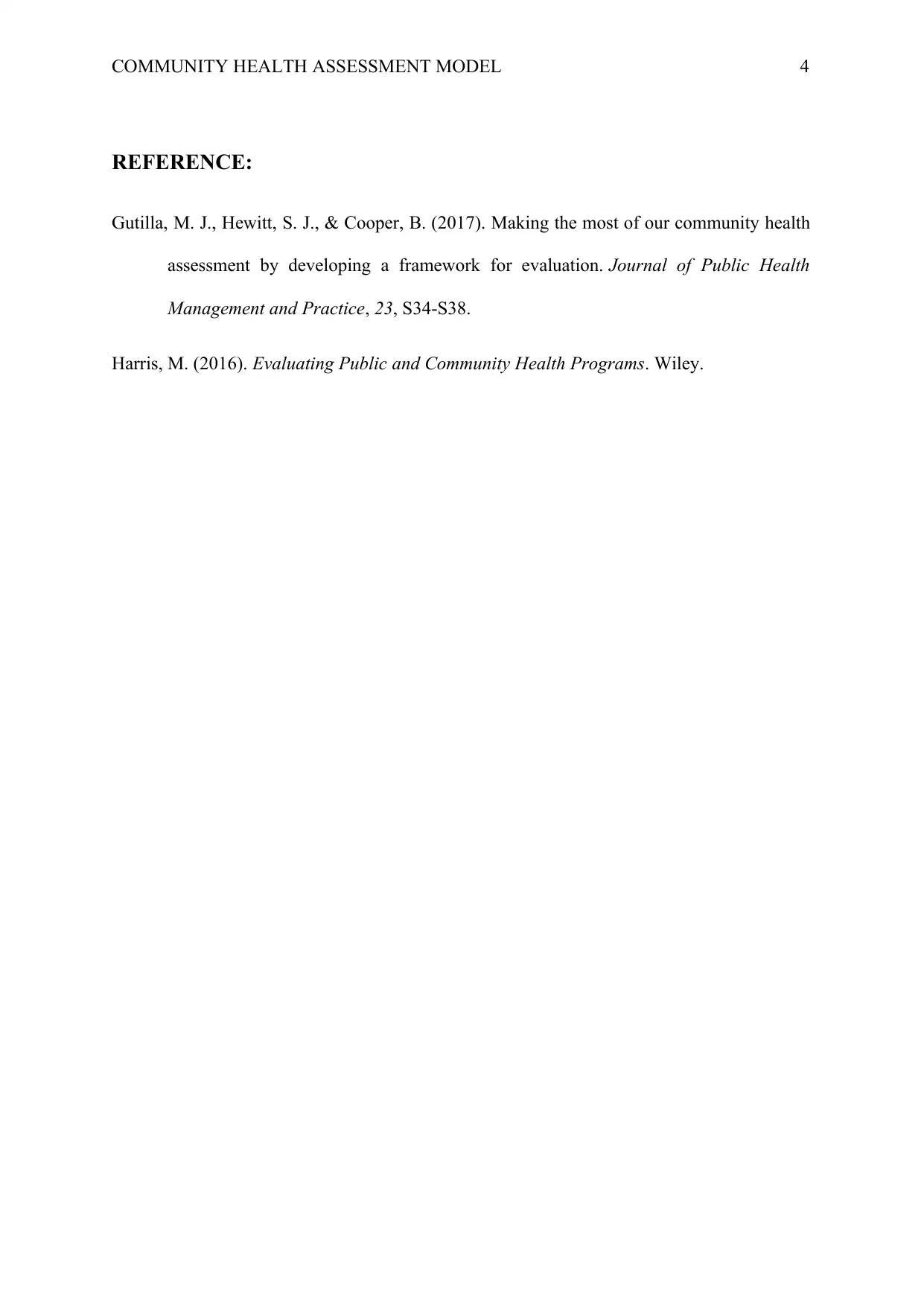Community Health Assessment Report: Needs, Planning, and Outcomes
VerifiedAdded on 2022/08/17
|4
|569
|16
Report
AI Summary
This report delves into the realm of community health assessment, emphasizing its pivotal role in evaluating and addressing community health needs. It examines the “Community Health Assessment Model,” particularly focusing on the “Mobilizing for Action through Planning and Partnership” (MAPP) model, highlighting its significance in facilitating community involvement and planning. The report underscores the importance of comprehensive data collection and analysis to identify health issues and inform the development of community health improvement plans. It also highlights the benefits of such assessments, including improved healthcare accessibility and community engagement, and outlines the roles of various stakeholders, such as healthcare providers and government agencies. Furthermore, the report references the Affordable Care Act’s guidelines for community health assessments and emphasizes the crucial role of nurses in assessing patient needs, providing education, and developing health policies. The report's findings and insights are supported by the reference to the “Journal of Public Health Management and Practice” and the book “Evaluating Public and Community Health Programs.”
1 out of 4









![[object Object]](/_next/static/media/star-bottom.7253800d.svg)